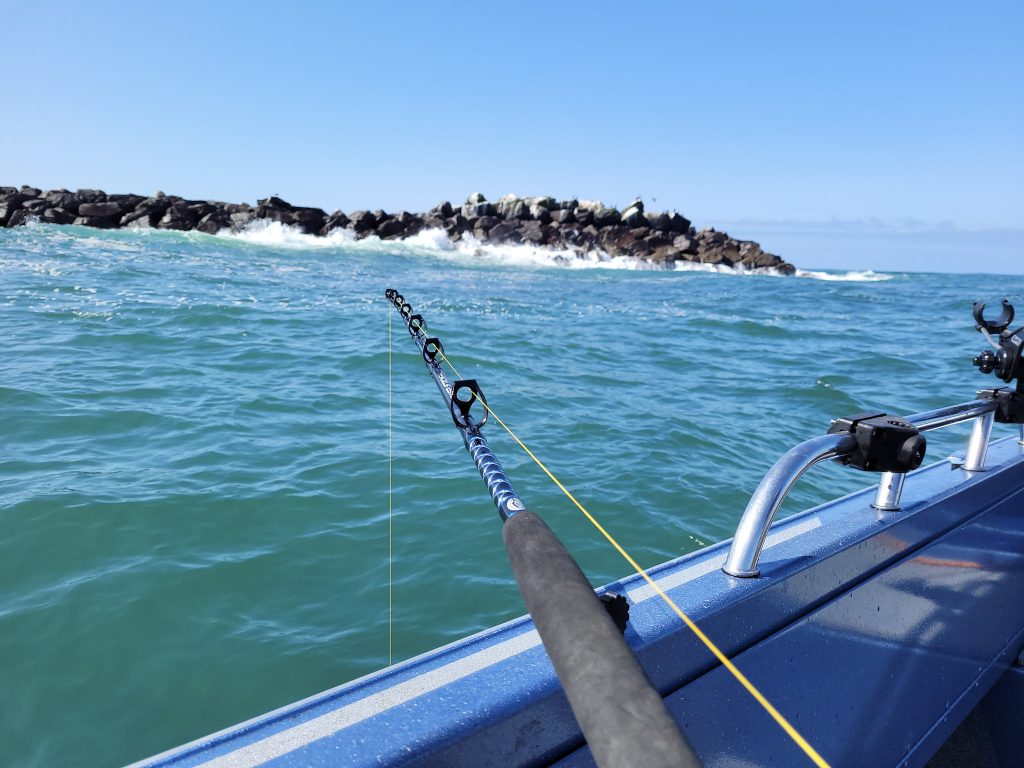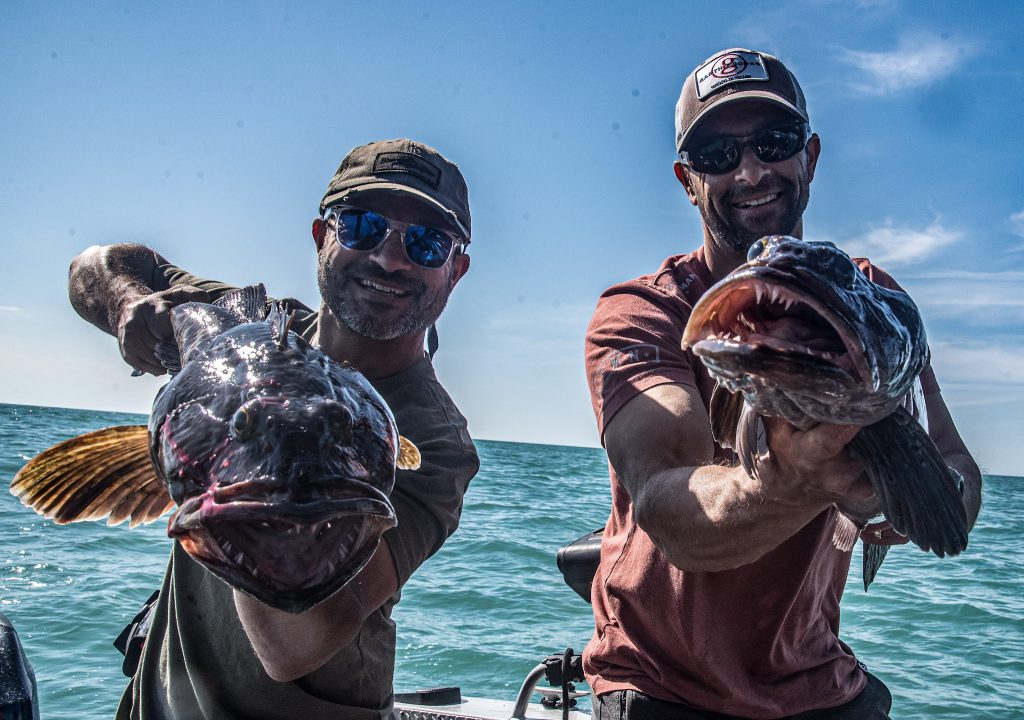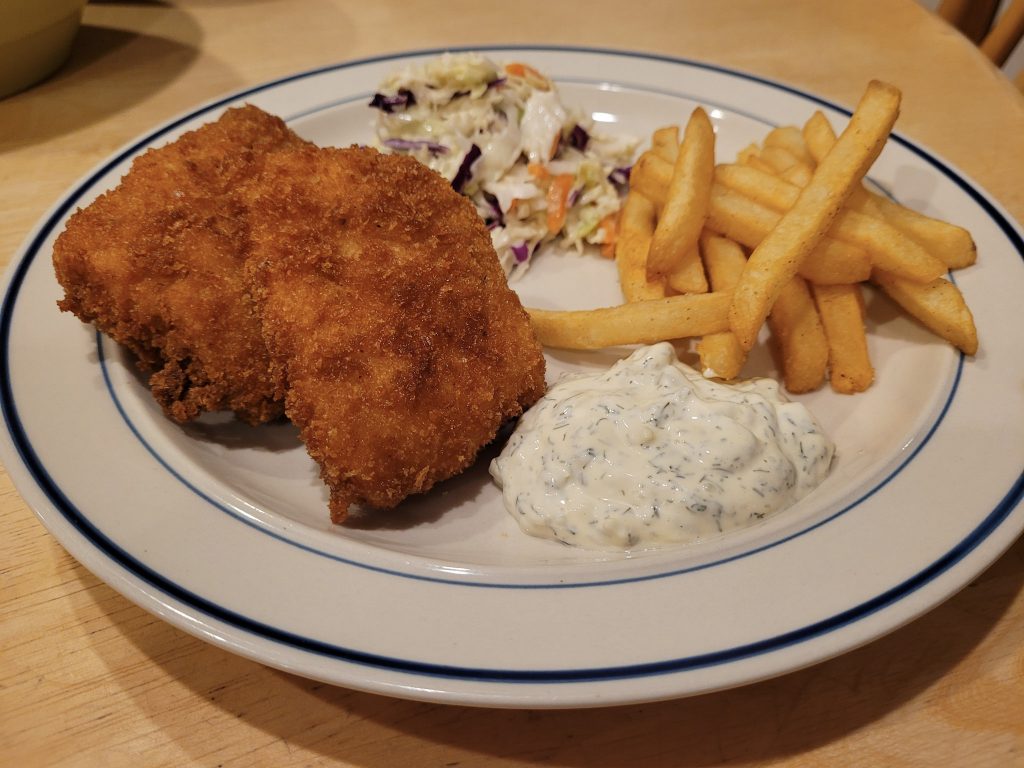Lingcod! Leave a reply

Lingcod!
By Jason Brooks
One of the most sought-after fish for eating is the lingcod. Known for their flakey white fillets and aggressive bite lingcod are not an actual cod at all but their own species. One of the most vicious fish that swims in the ocean grows fast and once they reach adulthood have few predators. There are a few things that can help anglers catch more of the “bucket heads” as they are often called due to their large head compared to their body. Here are some things to consider when targeting lingcod.

Live Bait.
Jigging for lingcod is one of the most common techniques and so is the use of frozen baits such as herring, anchovies, and mackerel but if you can get live kelp greenlings then you will catch more lingcod. These small bottom fish are often found near kelp beds and even amongst some shallow rock piles are a nemesis to lingcod nest but also a main food source. Before you head to the lingcod grounds stop by the kelp beds and use some small jigs to catch a few kelp greenling. Keep them alive in a bucket full of seawater and then rig them with a 5/0 treble hook trailer and a 9/0 single hook. Stick the treble hook near the tail and the single hook through the upper jaw of the kelp greenling but do not kill it. You can fish the bait live but once the poor little kelp greenling dies, keep fishing it! For some reason lingcod love them. Last spring I caught three nice lings before the bait fell apart.

Scent Helps.
Lingcod are veracious feeders, but they need to find your lure first and the use of scent really helps. Pro-Cure makes a variety of bottom fish scents with Butt Juice, Squid and Flounder Pounder being top producers but do not overlook Bloody Tuna either. Douse everything with the scent from your jigs to your leader and weights. The idea is to get a good scent trail going to bring in lingcod which will bite the jig or bait at the sight of it being jigged or moving about. Scent brings them to the dinner table and gets the bite going.

Remember where you are.
Lingcod prefer structure, especially rock piles, large boulders, deep holes, and steep ledges. They are a predator fish which means they need to lay in ambush and then grab their prey. Jettys are popular places to find lingcod for this reason as they hide amongst the rocks and have a lot of prey to target. Besides remembering where you found lingcod in the past be sure to pay attention to the size of the lings. They are so vicious that they will eat other lingcod so if you are catching sub-adult fish, which are under 20-inches for males and 30-inches for females, then you are at a “nursery” of sorts and unlikely to catch anything bigger. If you are catching small lingcod, it is best to move on. When you start catching larger fish then mark the spot on your GPS because most lingcod do not move far during their lifetime, though some have been known to migrate, mostly females during the spawn.

Upsize your gear.
Not only use larger hooks but stout leaders as lingcod have 18 super sharp teeth (do not stick your hands in their mouth either!). A good base for a leader is at least 30-pound monofilament but some anglers will even use a short piece of stainless cable to a bumper of monofilament in case the rigging hangs up in the rocks. A heavy rod and proficient level wind reel helps as well because those big fish will grab your lure or bait and try to retreat to the hole between rocks they came from. You need to be able to pull them out of these spots.

Be ready with the net.
Lingcod often grab other fish and hang on instead of biting the hook. These are called “hitchhikers” and when fishing for sea bass it is common to get a few lingcod this way. Gaffing is a popular wayto land bottom fish, but some regulations have size restrictions on lingcod, so gaffing is not the best option. When you have a hitchhiker, you want someone ready with the net, or gaff if legal and they are good at gaffing, as lings are notorious of letting go at the last second. One way to keep this from happening, or to keep the ling from going crazy and cutting your leader, is to keep the fish underwater. As soon as you pull the fish up and it breaks the surface it will surely let go as well as go crazy if hooked. This is where the person on the net needs to be ready and scoop up the fish before it breaks the surface.

Lingcod are ugly on the outside but beautiful on the inside, delicious and easy to catch. They are not the kind of fish where you go out for the day to do some sightseeing and catch and release like salmon. Instead, you want to find the big lings, get your limit, and then find another fish to catch or head home to get the deep fryer going. By using some of these tips and techniques you will catch more lingcod. Enjoy and do not forget the coleslaw and some lemon wedges for the fish fry.

